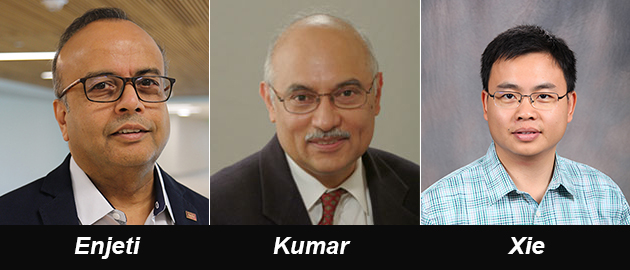
Solar energy is the cleanest and most abundant renewable energy source available, and the U.S. has some of the richest solar resources in the world.
To support the progression of solar power, the U.S. Department of Energy (DOE) announced it would provide $128 million in funding to advance solar technologies. Through the Office of Energy Efficiency and Renewable Energy’s Solar Energy Technologies Office, the DOE will fund innovative research projects that will lower solar electricity costs, while working to boost solar manufacturing, reduce red tape and make solar systems more resilient to cyberattacks. Among the 75 teams to receive an award is a team led by Texas A&M Engineering Experiment Station researchers.

The team received $4.4 million for their project “Secure Monitoring and Control of Solar PV Systems through Dynamic Watermarking.” Their goal is to develop and demonstrate a cyber-resilient operation for power distribution systems with massively photovoltaic (PV) generation, such as rooftop solar panels. It is led by Dr. Le Xie (lead PI), Dr. P.R. Kumar and Dr. Prasad Enjeti from the Department of Electrical and Computer Engineering at Texas A&M University. Partners include researchers from MIT, CenterPoint Energy, Argonne National Laboratory (ANL) and the Illinois Institute of Technology (IIT).
With their project funding they will develop and demonstrate an active defense mechanism of the PV distribution system operation using a dynamic watermarking technique to monitor the cybersecurity. The technique involves injecting a probe signal onto the grid to authenticate grid actions. The approach will include real-time deployment of online computational algorithms in real-world critical locations.
“The physical layer includes power transmission lines, transformers, solar generation units and power electronics devices. The cyber layer includes communication, control and sensing (meters),” said Xie. “These two layers tightly interact with each other. Hackers can compromise the PV distribution system by intruding into the cyber layer or manipulating the meter readings. So, we hope our PV distribution system can be immune to potential cyberattacks, therefore cyber resilient.”
Xie said that by injecting a (small) private signal with certain signatures into the grid, an indelible signature will be imprinted in the measurements from sensors. And while hackers may compromise the grid by manipulating the sensors, with such an indelible signature, any cyberattacks on the sensors will be detected by checking the existence of the imprinted signature, as any cyberattacks on the sensors will distort the signature.
Using this idea, Tong Huang, Bharadwaj Satchidanandan, Kumar and Xie designed a framework of securing Automatic Generation Control (AGC), which is a crucial frequency regulation scheme in bulk power systems. The research funded by DOE is built upon the preliminary success on AGC. A paper describing the preliminary success appears in IEEE Transactions on Power Systems.
“By this technique, we can determine if the grid is manipulated by hackers. This is what we mean by authenticating grid actions,” Xie said, adding that they would need to develop an algorithm based on the watermarking method theory, which they would then test on an existing system. “This would drive the innovation ecosystem of solar generation integration with a cost-effective yet powerful defense mechanism against sophisticated cyberattacks on the grid.”
The comprehensive dynamic modeling of PV-dominant distribution systems would then be established. “We propose a defense framework against any cyberattacks on the telemetered measurements in the PV-dominated distribution system, regardless of the attack model/objective,” he said. “This is valuable in terms of providing a general-purpose guarantee since the objectives of adversaries are unpredictable.
“This team is uniquely composed and positioned to address the challenges in the future solar-rich distribution systems, and advance the frontier of cyber-resilient situational awareness of deep PV-penetrated distribution systems,” Xie said.
